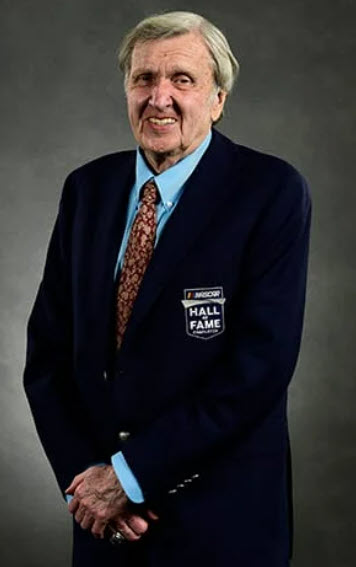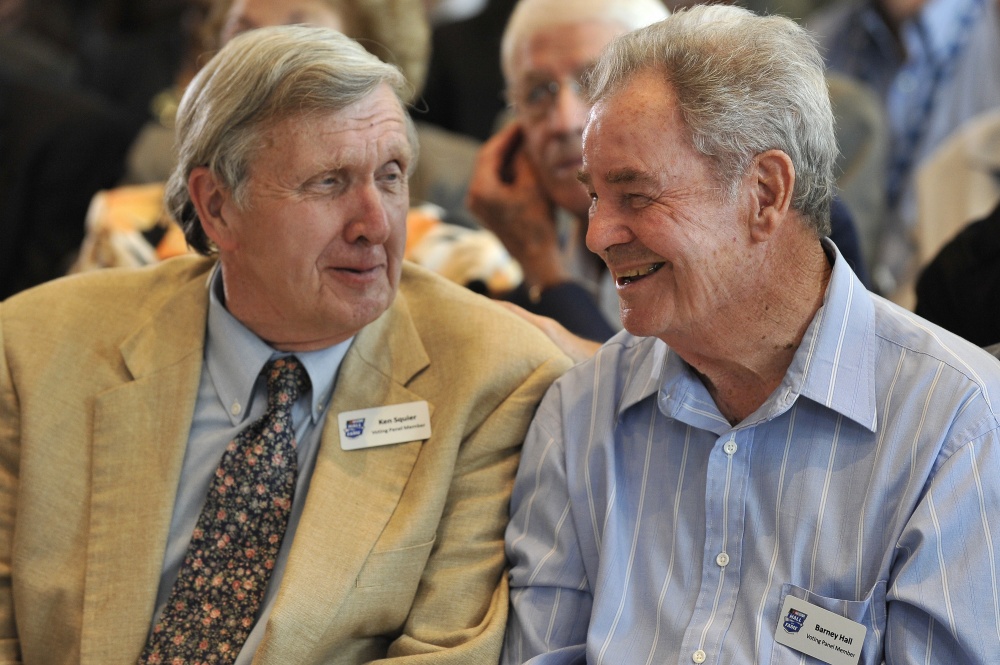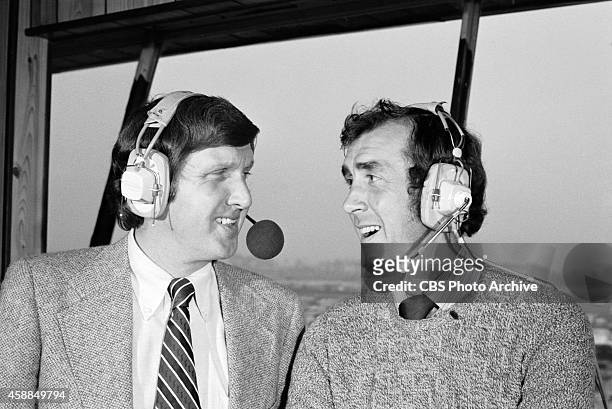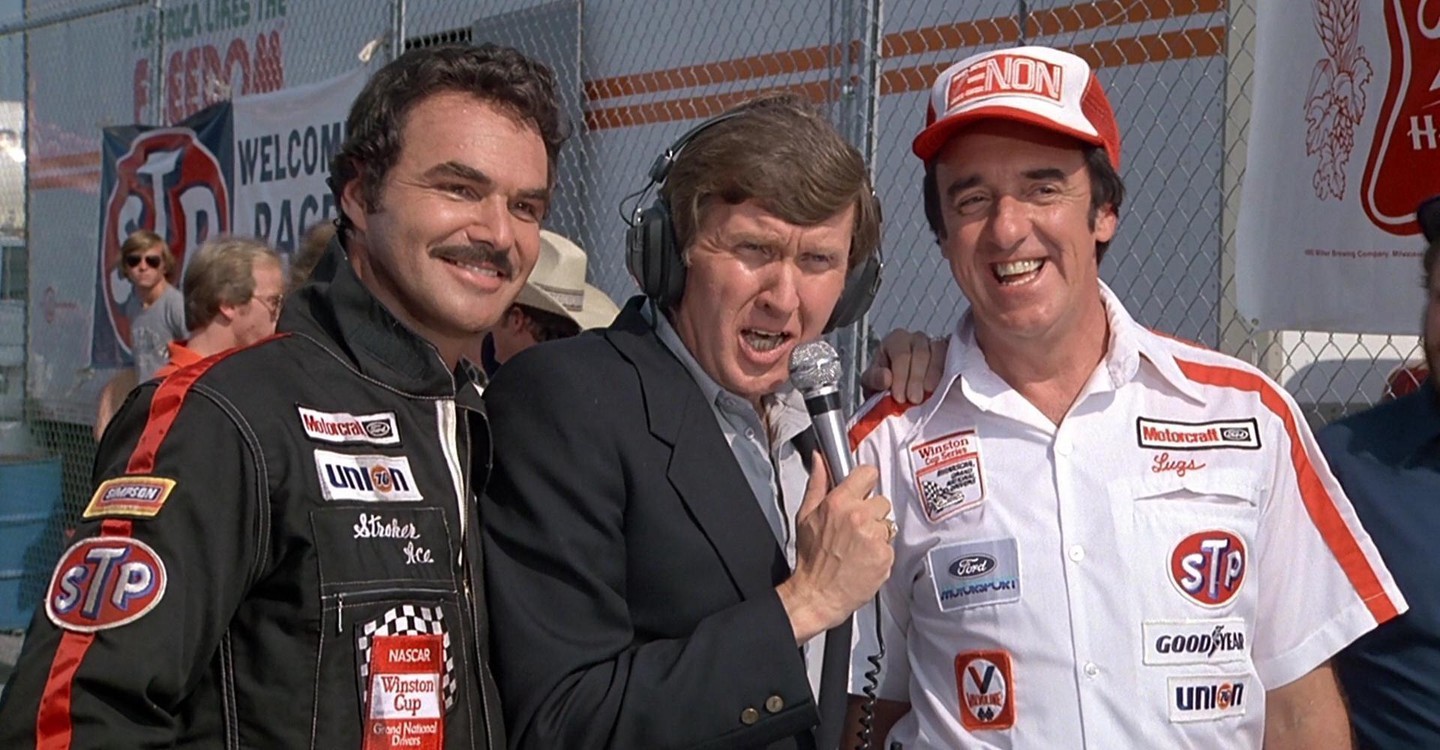Ken Squier, the legendary broadcaster, passed away Wednesday night in Waterbury, VT, at age 88. Co-founder of Motor Racing Network, Squier set the highest marks for journalistic excellence in both the broadcast booth and the printed page. He was an astute observer of motorsports and a kind and caring friend to many in the racing world. He was a member of the Motorsports Hall of Fame of America, the NASCAR Hall of Fame and the Road Racing Drivers Club.
 Ryan McGee of ESPN posted this remembrance of the man noted for his storytelling:
Ryan McGee of ESPN posted this remembrance of the man noted for his storytelling:
Storyteller.
That term has become a bit overused. From social media influencers to suburban Substackers, everyone loves to declare themselves a storyteller. The great ones never need to wear that name tag, though. You know them as soon as you hear them.
Ken Squier was, above all else, a storyteller.
“Like bullets they propel themselves out of the corner!”
“He’s getting some air … gobbling it up in that car, No. 88, keeping it cool to get ready for that final assault …”
“Johnny Utsman hand grenades the engine! It detonates right at the start-finish line!”
Squier’s own remarkable life story ended Wednesday night, passing away at the age 88. But the sound of his perfectly balanced hard-yet-gentle New England voice and the stories it told us all, from the public address speakers of Vermont and MRN Radio to CBS and TBS television, will never stop echoing off the walls and halls of racetracks and the broadcast booths that look over them.
“Look at that Oklahoma land rush on the backstretch!”
“He fireballs his way into the lead!”
Squier’s story is equal parts Howard Cosell and Johnny Appleseed. He was a New Englander, born and raised in Waterbury, Vermont, the son of a radio station owner. He’d listen to auto races carried by WDEV and became enamored with the urgent, gallant descriptions of the men who piloted hurtling pieces of machinery around places such as the Indianapolis Motor Speedway, devouring and studying those broadcasts like a literature professor delving into Shakespeare and Chaucer. He took what he learned to the PA microphones of short tracks throughout race-car-obsessed New England. The talent that oozed from those speakers caught the ear of NASCAR president Bill France, who was kicking around the idea of a radio network that could bring his stock car races to a broader audience.

Squier with MRN co-founder Barney Hall. [NASCAR image]
“I think, at least I hope, that what Bill heard was something different,” Squier recalled in a 2013 conversation following his election to the NASCAR Hall of Fame as the recipient of the Squier-Hall Award for NASCAR Media Excellence. Yes, that’s his name on the award. “When we first started discussing what we could do that was perhaps a little different was focusing on the drivers. There would always be a place to discuss the mechanical aspects of the cars and the race strategy, all of that. But in the end, it had to be about those heroes behind the wheel and the death-defying stuntmen who went over the wall to pit those cars. It’s not about metal and engines and tires; it’s about the people and the stories behind those people, because they are remarkable people.”
So was he.
With France’s blessing, it was Squier who constructed the Motor Racing Network in 1970, with races carried by a collection of radio stations that grew from a smattering of southern outposts to a nationwide chain that reached into the hundreds. He assembled a team of fellow local racing broadcasters and PA announcers, including the man who shares top billing on the Squier-Hall Award, the pride of Elkin, North Carolina, Barney Hall.
“So, you took a Vermont Yankee and a North Carolina hillbilly and you put them on the radio together to talk about race cars,” Hall recalled in 2013 with a chuckle. “But it worked. And it worked because Ken believed that if you could tell a story in a unique way, use different words, really take the listener down into the infield, make them feel like they were there, then it didn’t matter where you were from. Just look at our teams at MRN and what he had on TV. Broadcasters from all over the place. That made listeners from all over the place feel welcome on a Sunday afternoon.”

Squier with longtime friend and cohort David Hobbs. [CBS photo from Getty Images]
It was never enough for Squier to simply broadcast NASCAR races and be done. He was always working on a deal somewhere. He was instrumental in helping the sanctioning body ink its landmark deal with CBS, a partnership that lasted two decades and began with what is inarguably Squier’s most famous moment: the finish of the very first CBS flag-to-flag live broadcast, the 1979 Daytona 500.
“And there’s a fight! Between Cale Yarborough and Donnie Allison, their tempers overflowing. They’re angry. They know they have lost. And what a bitter defeat.”
Squier never stopped running WDEV and its regional network, which his family still owns, and for decades, even as he jetted off to commentate Olympic speedskating or to shoot movie scenes with Burt Reynolds, he still found time to cohost a weekly WDEV show titled “Music to Go to the Dump By.” He never stopped doing whatever he could to keep up the health of grassroots racing in New England, even when he had become larger than racing life, especially his beloved Thunder Road Speedbowl, a quarter-mile hilltop oval in Barre, Vermont, that he founded more than 60 years ago.
“You would watch him on TV doing a race from Talladega on CBS with Dale Earnhardt battling Richard Petty and then three nights later he’d be with us doing public address at Thunder Road,” two-time Xfinity Series champ Randy Lajoie recalled at the NASCAR Hall of Fame standing next to Squier in 2013. “I would say, ‘Ken, you know you don’t have to slum it with us anymore,’ and he’d say, ‘I love it here. And you’ll be racing at Talladega with us soon enough.’ Damn if that wasn’t true. And I think he had a lot to do with people down there even knowing who I was.”
Squier was always scouting for and coaching up young talent, both on the racetrack and those talking about the racetrack. An endless roster of former and current motorsports broadcasters, from broadcast and cable TV to terrestrial and satellite radio, got their first breaks at one of his racetracks or radio stations. And no matter where any NASCAR media member comes from, anyone of a certain age with a media center credential has at least a few stories to tell about Ken Squier calling, writing a letter or pulling them behind a stack of tires in the garage with suggestions, advice and a bit of razor-edged New England criticism.
“Don’t settle for ordinary words of description when extraordinary words are available.”
“Connect the everyman with Superman and Superman with everyman.”
“Never forget, no matter how big it gets, above all else this sport is about common men doing uncommon things.”

From the movie “Stroker Ace”, Squier is flanked by Stroker (Burt Reynolds. left) and Lugs (Jim Nabors). [Hal Needham film image]
The last time I chatted with Squier in person, we talked about a column of mine he had just read and didn’t like. He told me that he didn’t agree with my premise, but he appreciated my passion. Then he noticed my ring, emblazoned with the red, white and blue shield of Captain America. He grabbed my hand and pointed at the emblem.
“Well, of course you like superheroes. We are surrounded by them every weekend at the racetrack.”
Yes, we are. And Ken Squier was one of them. The superhero of motorsports storytellers.
